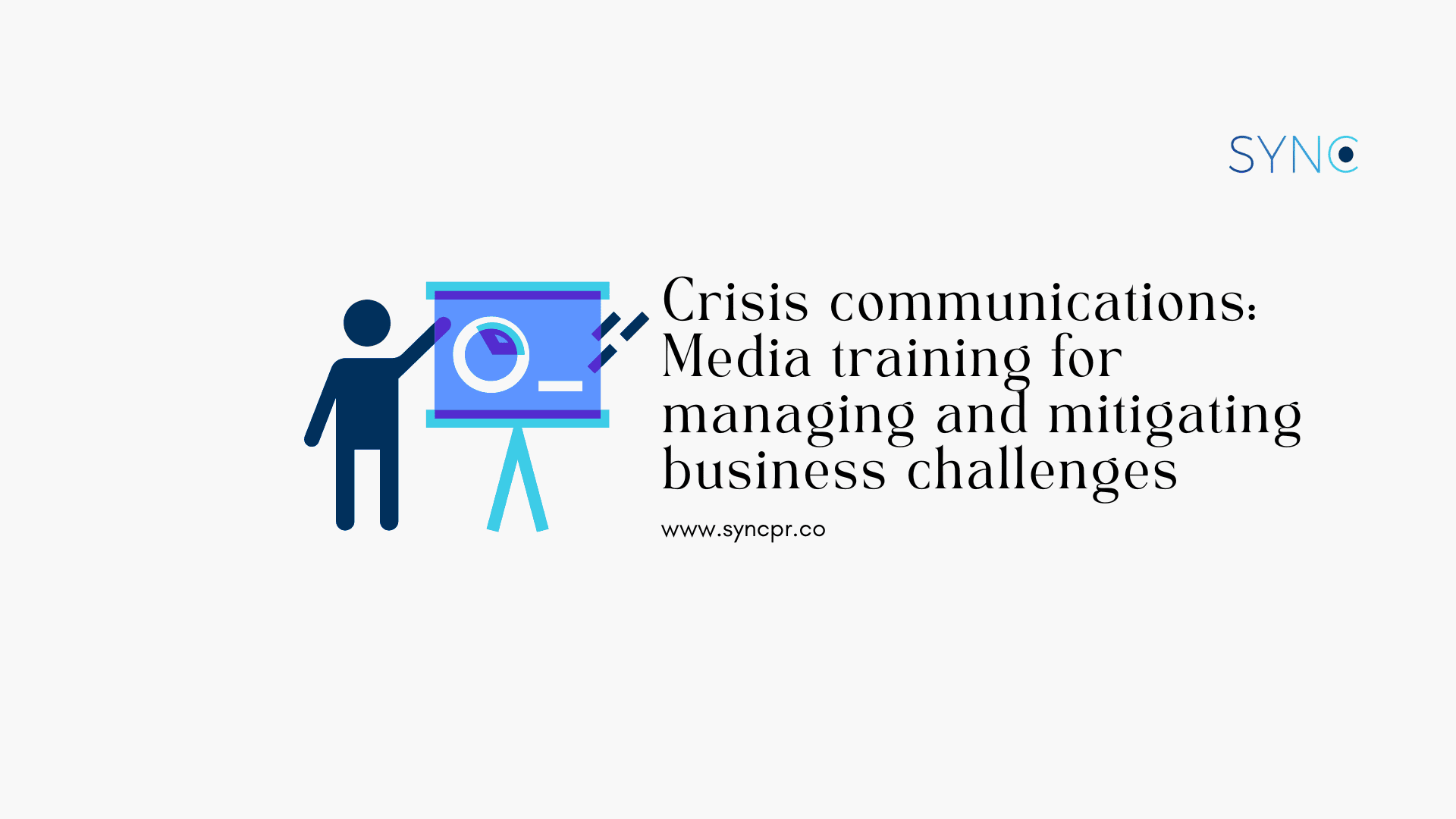A crisis is inevitable. Any business owner worth their salt should know that. Regardless of the scale and severity of the crisis, every business should be prepared and well-trained to manage and mitigate them professionally to maintain the reputation of the company.
Here are a few steps every business should take to manage a crisis.
Overview of media training for effective crisis management and communications
For the uninitiated, media training is an important aspect of training in communications, primarily for individuals who are in positions that will be interacting with members of the media, to ensure precise and professional reporting. It is an essential component for effective crisis communications to prepare a representative on how to engage with the media thoughtfully and skillfully.

Media training also encompasses exposure to a variety of interview situations and formats and includes:
- How to predict interview questions
- Ways to answer tough questions
- How to deliver crucial information effectively
- How to improve media communication skills over time
- How to gauge the effectiveness of an interview
Recognising different types of crises that businesses may face
Like many things in life, it is always best to prepare for the worst. While no business owners wish to be caught in a crisis, it can happen to anyone. Hence, it is best to know what kinds of crises you could find yourself in and devise some crisis management plans ahead of time. The following are several types of crises to prepare for:
- Financial crisis – when the company loses its revenue and assets and can no longer pay its debts.
- Personnel crisis – involves misconduct caused by an employee or an individual associated with the company.
- Organisational crisis – when a company wrongs its consumers or employees for their own benefit through deception, management misconduct, or skewed values and neglect.
- Technological crisis – involves technological failures such as system crashes causing disruption in everyday processes, which is common in e-commerce sites and software companies.
- Natural crisis – when natural disasters not only impact the day-to-day processes of the business but also affect the employees directly, such as causing injuries or death due to a lack of planning.
- Confrontation crisis – involves a group demanding to be heard and have their needs met, sometimes caused by disagreements or even mass discontent.
- Workplace violence crisis – involves escalated disagreements leading to violence between employees.
- Crisis of malevolence – involves malicious acts initiated by a direct opponent to sully a company’s reputation.
Knowing what could happen to your company is the first crucial step in preparing for the storm, so be sure to familiarise yourself with these common crises.
Also read 5 key content indicators to determine its relevance to your overall brand strategy.
Selecting and preparing a spokesperson for media interactions and training on message development and delivery during a crisis
The next step in preparing a crisis management plan is to select a suitable spokesperson for your brand or company. Evidently, this individual is required to have a comprehensive knowledge of the company to be able to answer authentically and concisely. On top of that, find someone who is not only equipped with good communication skills but is also comfortable speaking in front of a camera to ensure that your message does not easily get lost in translation.
Preparation and media training is key to effective message delivery during a crisis. Here is a list of tips to give you a head start in your media training plan:
- Practise the talking points, and practice often
- Maintain a cool and calm composure, even when dealing with difficult journalists or difficult questions
- Practise how to remain polite and in control in challenging situations
- Always deliver the message succinctly and concisely so it will not be misinterpreted
- Research thoroughly to avoid any surprises
- Avoid saying ‘no comment’ at all costs, and aim to tell the truth
- Anticipate and practise any difficult questions as much as possible
- Dress appropriately to reflect well on the company or brand
- Be authentic and have empathy for anyone affected by the crisis
Developing clear and concise key messages for different stakeholders and adapting messages based on the nature and severity of the crisis
To manage a crisis, you can expect to use different channels for communication to reach different stakeholders. While your core message should be consistent throughout all channels of communication, the messages will need to be tailored according to the different stakeholders and adapted based on the nature and severity of the crisis to deliver the key messages smoothly.

In an effort to ease your crisis management process, you can develop a key message map template in advance to help you systematically view your message and organise them for each audience. It usually consists of a core message followed by three supporting points which include details, evidence or action. With this key message map, you can tailor your messages across different channels and audiences comprehensively.
Establishing relationships with media contacts before a crisis occurs
When a crisis takes place, it can be difficult to get the story out from your perspective to sway public opinion and gain the upper hand in the story. To manage this, building rapport with key media outlets should be a part of your crisis management strategy before a crisis occurs. This way, you have the opportunity to establish goodwill with the media and their audience so you can bank on your media contacts to be one of the channels to deliver your key messages in times of crisis.
Learn how to craft an effective PR strategy on a budget.
Responding promptly and transparently to media inquiries and correcting misinformation and addressing public concerns
In the heat of the moment, the most important thing to remember when responding to inquiries is that the spokesperson and the response team must keep a level head and reply promptly and transparently. Other than being concise and transparent, responses should be timely to avoid miscommunication and misinterpretation. Additionally, with the current speed and volume of information-sharing, it can be easy for the general public to spread misinformation and cause distress. Hence, timely and prompt responses should be a priority in crisis management.
Utilising social media platforms to communicate during a crisis
One of the many benefits of social media platforms is their accessibility and reach, which means that companies and individuals can now utilise it to their advantage. Instead of solely relying on key media outlets to disseminate your messages, social media is now a viable option for spreading information quickly and efficiently. During a crisis, a company can use social media platforms to:
- communicate the official key messages directly and timely with its audience
- provide direct assistance to those affected
- monitor the court of public opinion
- track any trend or misinformation during the online outreach
The key to a successful crisis management strategy is planning before the storm
There is some truth to the old adage that preparation is half the battle; in order to weather the storm of a crisis, preparations and plans will have to be made in advance. Media training and a general awareness of what could come can set your company up for success in managing a crisis in the future. Now it is time to proactively prepare a crisis management strategy for you and your company.
If you are ready to take the next step, we are ready to help you in your process! Get in contact with one of our PR consultants at hello(a)syncpr.co today to find out how we can help you gear up for your lasting future.

